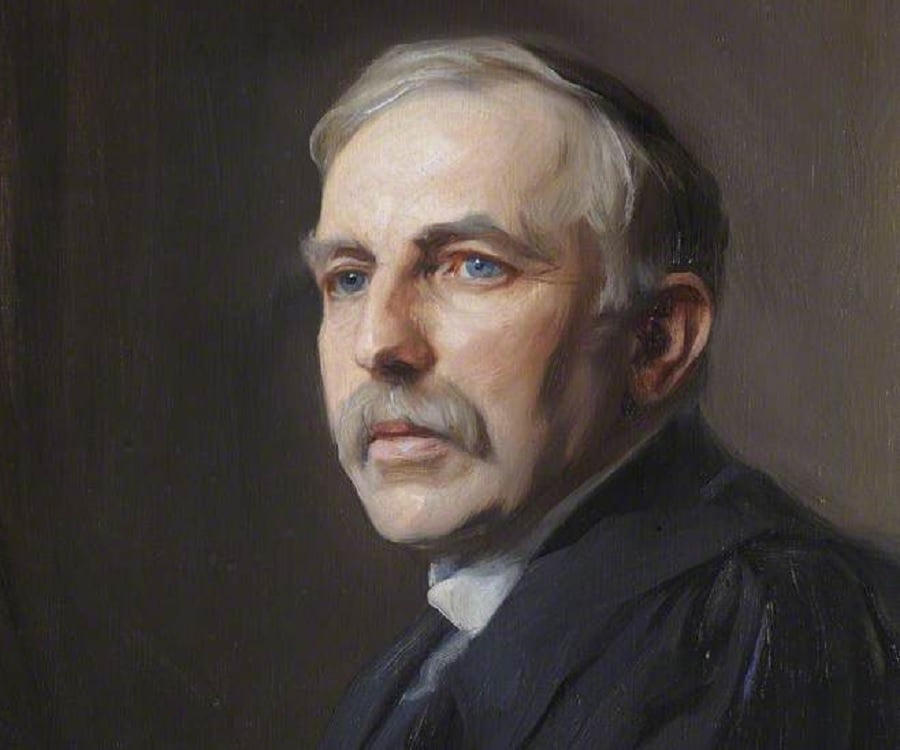When we think of the concept of splitting the atom, the image of mushroom clouds and devastating explosions often comes to mind. However, the reality behind this monumental scientific feat is characterized more by intellectual discovery than by cataclysmic warfare. At the nexus of this profound transformation in our understanding of matter stands a towering figure in the field of physics: Ernest Rutherford. Known as the “father of nuclear physics,” Rutherford’s remarkable journey elucidates the intricacies of atomic structure and sets the stage for both advancements in scientific thought and the ethical dilemmas that would later arise from nuclear experimentation.
Rutherford was born on August 30, 1871, in Spring Grove, New Zealand, a humble setting far removed from the academic echelons that he would later navigate with remarkable prowess. His early life was characterized by modest means yet underscored by an insatiable curiosity about the natural world. He pursued higher education at the University of New Zealand and later earned a scholarship to study at the University of Cambridge. It was within this fertile academic environment that Rutherford would begin to formulate the foundational principles that would govern nuclear science.
Rutherford’s initial forays into the scientific realm were marked primarily by his work on radioactivity. Building on the discoveries of Henri Becquerel and Marie Curie, Rutherford meticulously dissected the nature of radioactive emissions. His revolutionary theory posited that radiation consisted of distinct particles: alpha, beta, and gamma rays. This conceptual framework not only revolutionized the understanding of radiation but also paved the way for future explorations into isotopes and nuclear reactions.
The zenith of Rutherford’s career came with his groundbreaking gold foil experiment in 1909, conducted alongside his associates Hans Geiger and Ernest Marsden. Initially aiming to prove the prevailing plum pudding model of atomic structure, they directed a beam of alpha particles at a thin sheet of gold foil. Much to their astonishment, while most particles passed through the foil, a small fraction were deflected at large angles, some even bouncing back. This unexpected result forced Rutherford to reconsider the atomic model profoundly.
From these observations, he articulated the nuclear model of the atom, asserting that atoms consist of a dense, positively charged nucleus at their core, surrounded by a cloud of negatively charged electrons. This paradigm shift not only illustrated the intricacies of atomic configuration but also introduced the notion that atoms themselves were not indivisible, as once believed. Rutherford’s findings fundamentally altered the scientific landscape, leading to further investigations into atomic structure and property.
The implications of Rutherford’s work were vast, leading to an efflorescence of research into subatomic particles, eventually culminating in the discovery of the neutron by James Chadwick in 1932. Yet, while Rutherford illuminated the path toward understanding the structural components of atoms, he also inadvertently set in motion the quest that would harness nuclear energy—an endeavor that would one day culminate in both astonishing advancements and harrowing consequences.
Rutherford’s subsequent work involved investigations into both artificial transmutation and the nature of nuclear reactions. His experiments demonstrated that bombarding certain elements with alpha particles could transform them into different elements. This groundbreaking work offered insights into the potential for harnessing nuclear reactions, an endeavor that would hold profound implications for energy production and military applications alike. However, the ethical ramifications of this discovery lingered ominously on the horizon.
The legacy of Rutherford extends beyond his scientific achievements; it calls into question the responsibilities of scientists in the context of their contributions to society. The fission of uranium atoms, a direct descendant of Rutherford’s explorations, led not only to atomic energy but also to the development of nuclear weapons. This duality of promise and peril showcases the ethical conundrum faced by physicists and researchers at the precipice of new discoveries. Can we untangle the constructive from the destructive in a world where the atom is both a source of power and a harbinger of destruction?
As contemporary physicists grapple with the ramifications of nuclear technology, it becomes evident that Rutherford’s legacy is not merely one of scientific brilliance but also of introspection. The advent of nuclear medicine, power generation, and even current discourses on climate change reflect the duality inherent in atomic science. It serves as a reminder of the responsibility to guide technological advances towards altruistic ends. As we venture into an era of ever-advancing scientific inquiry, Rutherford’s insight beckons us toward a more conscientious examination of our scientific pursuits.
Ultimately, Rutherford’s groundbreaking contributions transcend the boundaries of traditional physics; they mark a watershed moment in scientific inquiry that continues to resonate today. The notion of the atom as a complex, dynamic system invites us to reevaluate our understanding of the universe and our place within it. Just as Rutherford opened the door to a new era of scientific exploration, we are urged to remain vigilant stewards of the knowledge we acquire, ensuring that the atom, a symbol of both creation and destruction, serves as a beacon of possibility rather than a harbinger of doom.
In conclusion, the legacy of Ernest Rutherford encapsulates a pivotal transformation in our understanding of atomic structure. It reminds us of the fragile balance between the pursuit of knowledge and the ethical frameworks that bind us as a scientific community. The road ahead lies not merely in furthering discoveries but in cultivating a profound respect for the complexities accompanying them. As we navigate the uncharted waters of nuclear science, may we remain forever vigilant, ensuring that the spirit of inquiry remains steadfast in its purpose: to illuminate, to empower, and ultimately to enrich the human experience.












